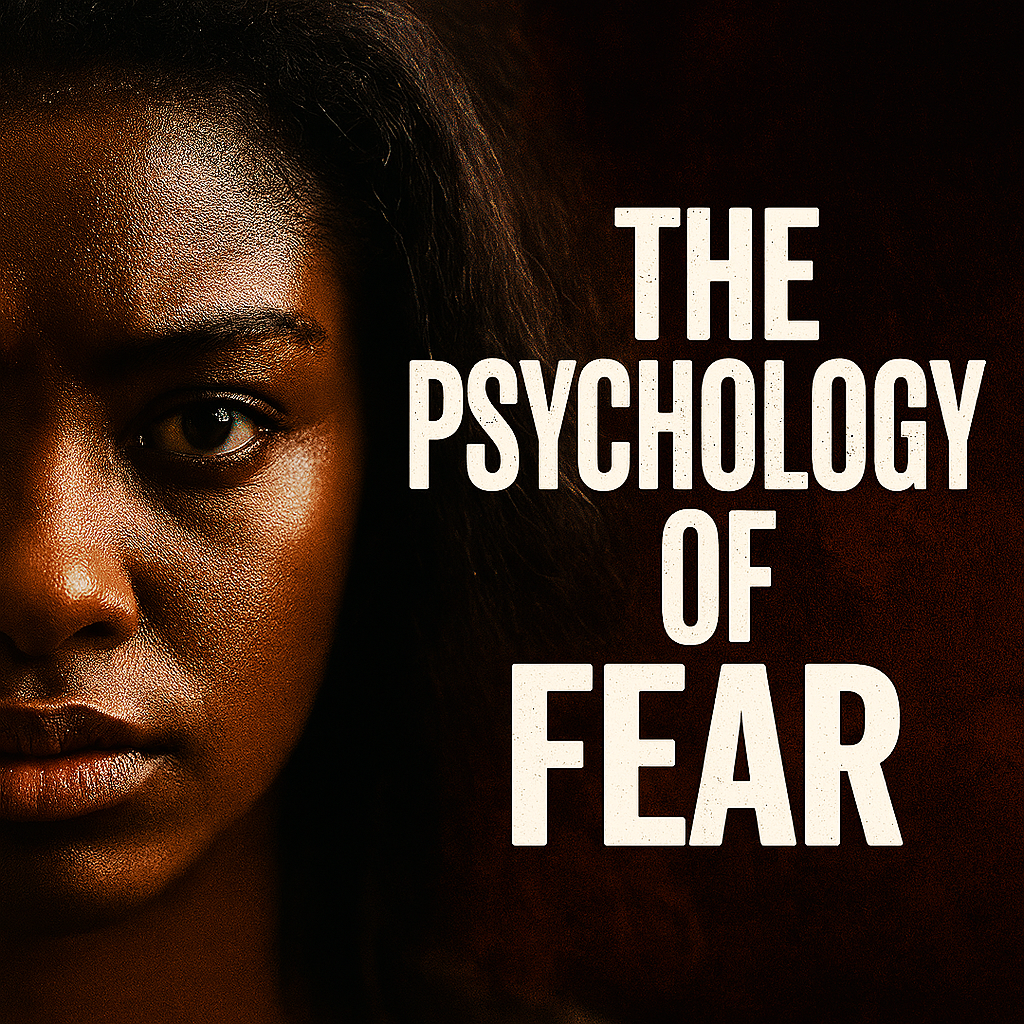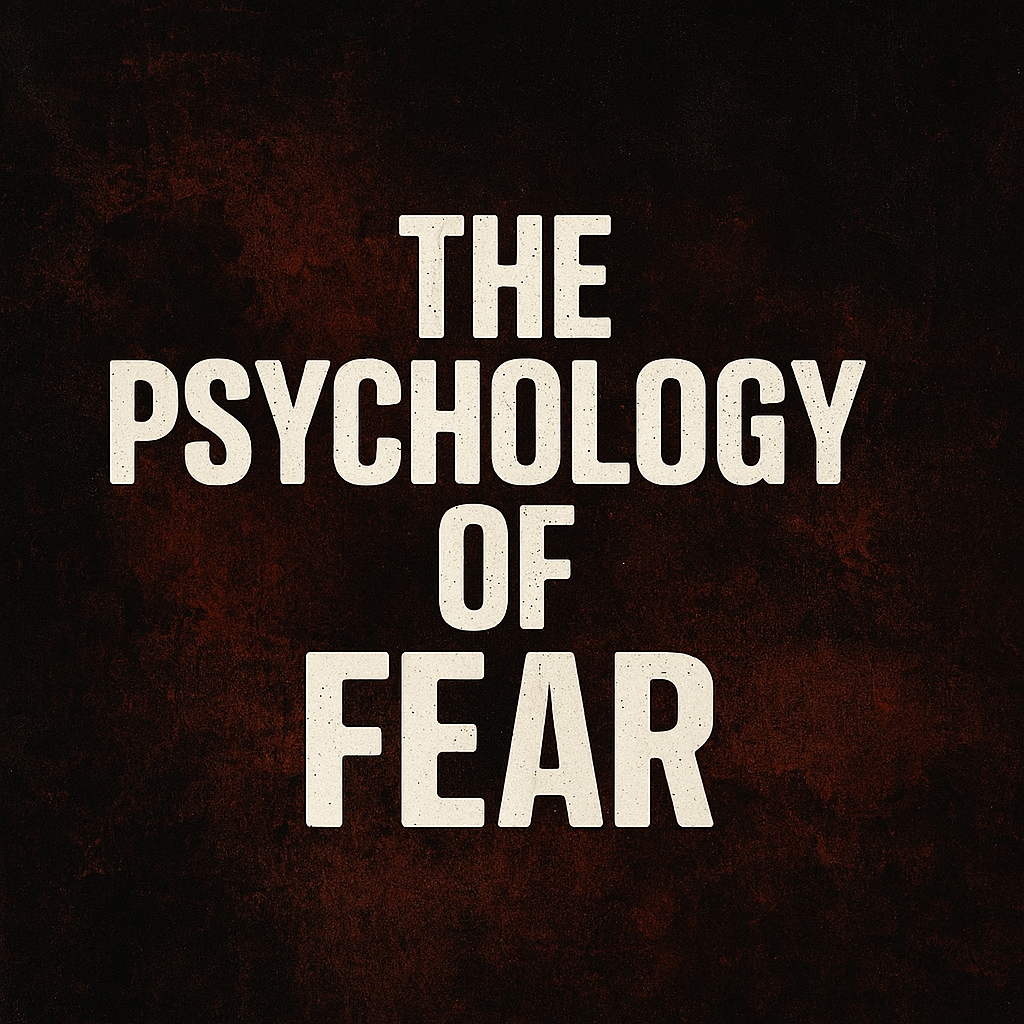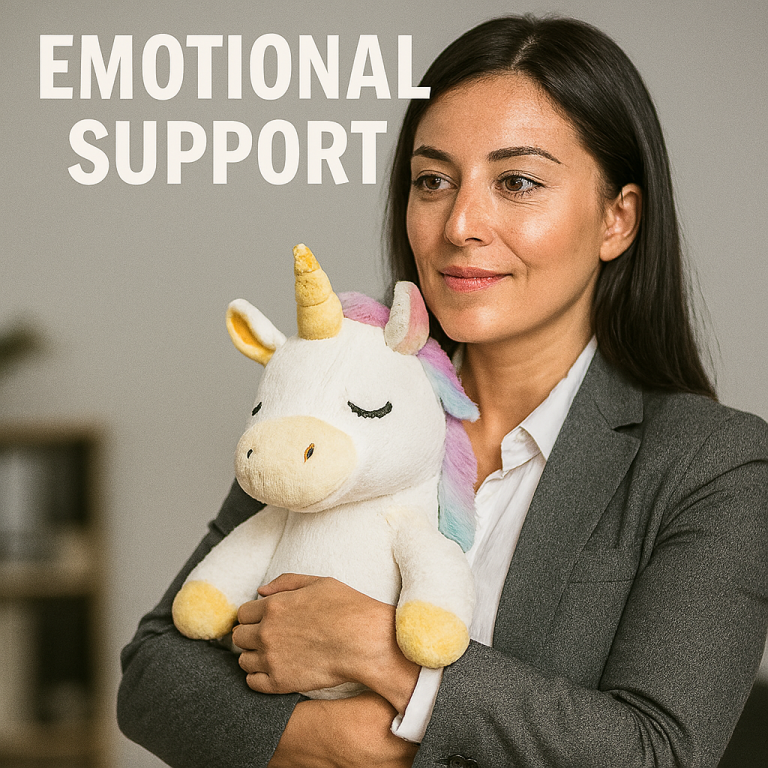
The Scary Fear Of Fear
Understanding Fear – A Primal Response
Fear Psychology
Fear is a universal experience—primal, personal, and profoundly human. It shapes our decisions, relationships, and stories. From the flicker of anxiety to the roar of panic, fear reveals what we value, what we protect, and what we resist. This editorial explores the psychology of fear in all its dimensions—biological, cultural, symbolic, and emotional. Through 20 modular sections, we trace how fear arises, how it evolves, and how it can be transformed. Whether rooted in trauma, imagination, or morality, fear offers insight into the human condition. It is not merely a reaction—it is a reflection. And when understood, it becomes a guide.
Psychology Of Fear – Survival And Threat Detection
Fear is one of the most ancient and universal human emotions. It evolved as a survival mechanism, helping early humans detect and respond to threats in their environment. When danger loomed—whether from predators, natural disasters, or hostile tribes—fear triggered a cascade of physiological changes that prepared the body to fight or flee. This response, known as the fight-or-flight mechanism, is governed by the amygdala, a small almond-shaped structure deep in the brain. The amygdala processes sensory information and signals the hypothalamus to release stress hormones like adrenaline and cortisol. These chemicals increase heart rate, sharpen focus, and heighten physical readiness. Even today, this system remains active, responding to both physical and psychological threats. Fear is not just reactive—it’s anticipatory, allowing us to avoid harm before it occurs. This predictive quality makes fear a powerful tool for learning and adaptation. It is deeply embedded in our biology, shaping behavior across cultures and generations.
| Brain Region | Role In Fear Response |
|---|---|
| Amygdala | Detects threat and initiates fear response |
| Hypothalamus | Releases stress hormones like adrenaline |
| Hippocampus | Stores fear-related memories |
| Prefrontal Cortex | Evaluates threat and regulates response |
| Thalamus | Relays sensory signals to fear-processing areas |
Psychological Triggers – What Sets Fear In Motion
Perception And Interpretation – Real And Imagined Threats
Fear is not always visible or tied to immediate and or physical danger. Often, it arises from perceived threats—situations we interpret as harmful, even if they pose no actual risk. This interpretive process is shaped by past experiences, cultural conditioning, and individual temperament. For example, someone who was bitten by a dog as a child may develop a lasting fear of dogs, even friendly ones. Similarly, societal narratives around crime, illness, or failure can amplify fear through repetition and reinforcement. The brain does not always distinguish between real and imagined threats; both activate similar neural pathways. This is why horror films, ghost stories, and suspenseful music can evoke genuine fear responses. Our cognitive appraisal system evaluates stimuli and assigns meaning, which then informs emotional reaction. Fear can also be contagious—witnessing others in distress can trigger fear in ourselves. This social transmission of fear plays a role in crowd behavior and mass panic. Understanding these psychological triggers helps us manage fear more effectively.
- Fear can be learned through direct experience or observation
- Cultural narratives shape what we fear and how we respond
- Media and storytelling amplify fear through repetition
- Imagined threats activate similar brain regions as real ones
- Social contagion spreads fear within groups
- Personal temperament influences sensitivity to fear
- Cognitive appraisal determines threat level
- Past trauma can heighten fear responses
- Fear can be anticipatory, not just reactive
- Interpretation is key—perception drives emotional outcome
Physiological Symptoms – How Fear Feels In The Body
Bodily Reactions – From Heartbeat To Hormones
Fear manifests physically in ways that are often immediate and intense. When the brain detects a threat, it sends signals to the body to prepare for action. The heart rate increases, pumping blood to muscles for quick movement. Breathing becomes rapid and shallow, maximizing oxygen intake. Pupils dilate to improve vision, and digestion slows as energy is redirected. These changes are part of the autonomic nervous system’s response, specifically the sympathetic branch. Sweating may occur to cool the body, and muscles tense in readiness. These symptoms are not just protective—they also serve as feedback, reinforcing the emotional experience of fear. These sensations can be distressing, especially when fear is chronic or disproportionate to the situation. Understanding these physical markers helps differentiate fear from other emotions and informs treatment strategies. It also highlights the deep integration of mind and body in emotional processing.
| Symptom | Physiological Mechanism |
|---|---|
| Increased Heart Rate | Adrenaline boosts cardiac output |
| Rapid Breathing | Oxygen intake rises for muscle use |
| Dilated Pupils | Vision sharpens for threat detection |
| Muscle Tension | Prepares body for movement |
| Sweating | Regulates body temperature |
| Dry Mouth | Saliva production decreases |
| Nausea | Digestion slows under stress |
| Dizziness | Blood flow shifts from brain to limbs |
| Cold Hands | Blood redirected from extremities |
| Shaking | Muscle activation and energy surge |

Types Of Fear – From Phobia To Existential Dread
Categories Of Fear – Specific, Social, And Symbolic
Fear comes in many forms, each with distinct characteristics and triggers. Specific phobias involve intense fear of particular objects or situations, such as spiders, heights, or flying. These fears are often irrational but deeply felt, and they can interfere with daily life. Social fears revolve around judgment, rejection, or embarrassment, commonly seen in social anxiety disorder. Existential fears are broader and more abstract, including fear of death, meaninglessness, or loss of control. These fears often emerge during life transitions or crises. Cultural fears reflect collective anxieties, such as fear of outsiders, disease, or technological change. Some fears are adaptive, helping us avoid harm, while others are maladaptive, limiting growth and opportunity. Fear can also be symbolic—representing deeper emotional conflicts or unresolved trauma. Understanding the type of fear is essential for effective coping and treatment. Each category engages different psychological and physiological mechanisms. Recognizing these distinctions allows for more targeted support and intervention.
- Specific phobias focus on tangible objects or scenarios
- Social fears involve interpersonal evaluation and rejection
- Existential fears relate to mortality and purpose
- Cultural fears reflect shared anxieties and narratives
- Symbolic fears represent deeper emotional issues
- Adaptive fears promote safety and survival
- Maladaptive fears hinder personal development
- Each type activates different brain regions
- Treatment varies by fear category
- Awareness improves emotional regulation
Fear Conditioning – How We Learn To Be Afraid
Memory And Association – The Roots Of Learned Fear
Fear is not only instinctive—it is also learned through experience and association. Classical conditioning plays a central role in how fear develops. When a neutral stimulus is repeatedly paired with a frightening event, the brain begins to associate the two. Over time, the neutral stimulus alone can trigger a fear response. This mechanism was famously demonstrated in the Little Albert experiment, where a child was conditioned to fear a white rat after it was paired with loud noises. Beyond laboratory settings, fear conditioning occurs in everyday life. A person who experiences turbulence during a flight may develop a fear of flying. These learned fears are stored in the hippocampus and reinforced by the amygdala. They can persist long after the original threat is gone. Extinction—the process of unlearning fear—requires repeated exposure to the feared stimulus without negative consequences. This is the basis of exposure therapy, a common treatment for phobias and anxiety disorders. Understanding fear conditioning helps explain why some fears are irrational yet deeply entrenched.
| Concept | Description |
|---|---|
| Classical Conditioning | Learning through association of stimuli |
| Little Albert Experiment | Demonstrated conditioned fear in a child |
| Hippocampus | Stores contextual memory of fear |
| Amygdala | Reinforces emotional intensity of fear |
| Extinction | Unlearning fear through safe exposure |
| Exposure Therapy | Treatment using gradual desensitization |
| Generalization | Fear spreads to similar stimuli |
| Discrimination | Fear response limited to specific cues |
| Reinstatement | Fear returns after re-exposure to threat |
| Spontaneous Recovery | Fear re-emerges after time without exposure |
Cultural Narratives – Fear As A Social Construct
Shared Symbols – Collective Anxiety And Myth
Fear is shaped not only by biology and experience but also by culture. Societies construct narratives around danger, morality, and the unknown, embedding fear into myths, rituals, and media. These stories serve to reinforce norms, warn against transgression, and bind communities together. Folklore often features monsters, curses, or divine punishment—symbols of collective anxiety. In modern contexts, fear is transmitted through news cycles, political rhetoric, and entertainment. These narratives influence what we fear and how we respond. For example, fear of strangers may be amplified by stories of crime or terrorism, even when statistical risk is low. Cultural fears can also reflect historical trauma, such as fear of famine, war, or displacement. These fears are passed down through generations, shaping identity and behavior. Rituals and ceremonies often serve to manage fear, offering symbolic protection or catharsis. Understanding cultural narratives reveals how fear operates as a social force, not just a personal emotion.
- Myths and folklore encode cultural fears
- Media amplifies fear through repetition and framing
- Political rhetoric often leverages fear for influence
- Rituals help manage and contain fear
- Historical trauma shapes generational fear
- Fear reinforces social norms and boundaries
- Collective anxiety can lead to scapegoating
- Cultural symbols represent deeper emotional truths
- Fear narratives evolve with technology and globalization
- Awareness of cultural context improves empathy and resilience
Fear And Control – The Desire For Certainty
Uncertainty And Vulnerability – The Roots Of Anxiety
At its core, fear often arises from a lack of control. When outcomes are unpredictable or situations feel beyond our influence, fear intensifies. This is especially true in contexts involving health, relationships, or safety. The human brain craves certainty—it seeks patterns, explanations, and predictability. When these are absent, anxiety fills the gap. Fear of the unknown is one of the most pervasive forms of fear. It can manifest in avoidance, hypervigilance, or obsessive behavior. People may try to regain control through rituals, planning, or information-seeking. However, these strategies can backfire, reinforcing the fear cycle. Vulnerability—acknowledging our limits—is often seen as weakness, but it is essential for emotional growth. Accepting uncertainty allows for flexibility and resilience. Fear and control are deeply intertwined, shaping how we navigate risk and change. Recognizing this dynamic helps us respond to fear with compassion and clarity.
| Dynamic | Description |
|---|---|
| Fear Of The Unknown | Anxiety about unpredictable outcomes |
| Control Strategies | Rituals, planning, and avoidance |
| Hypervigilance | Constant scanning for threats |
| Obsessive Behavior | Attempts to manage uncertainty |
| Vulnerability | Emotional openness to risk |
| Certainty Bias | Preference for predictable patterns |
| Risk Aversion | Avoidance of potential harm |
| Cognitive Dissonance | Discomfort from conflicting beliefs |
| Flexibility | Adapting to changing conditions |
| Resilience | Recovering from fear and stress |
Symbolic Fear – What Lies Beneath
Emotional Metaphors – Fear As A Mirror
Fear often operates as a metaphor for deeper emotional truths. It can symbolize loss, rejection, failure, or transformation. These symbolic fears are not always conscious—they may emerge through dreams, art, or behavior. For example, fear of falling may represent fear of losing control, while fear of darkness may reflect fear of the unknown. Symbolic fears are shaped by personal history and cultural context. They often appear in creative expression, revealing hidden anxieties. Artists, writers, and performers use fear to explore vulnerability, identity, and change. These metaphors allow audiences to confront fear indirectly, creating space for reflection and healing. Symbolic fear also plays a role in therapy, where clients unpack the meaning behind their fears. Understanding fear as metaphor deepens emotional insight and fosters empathy. It reveals the layered nature of fear—not just as reaction, but as reflection.
- Fear can symbolize emotional conflict
- Dreams often reveal symbolic fears
- Creative expression channels hidden anxieties
- Fear metaphors appear in literature and art
- Personal history shapes symbolic meaning
- Therapy explores fear as emotional metaphor
- Symbolic fear allows indirect confrontation
- Cultural context influences symbolic interpretation
- Metaphors deepen emotional understanding
- Reflection transforms fear into insight
Social Fear – The Need To Belong
Rejection And Judgment – Fear In Relationships
Humans are social creatures, and fear of rejection is one of the most powerful emotional drivers. Social fear arises from the need to belong, be accepted, and avoid embarrassment. It is especially strong during adolescence but persists throughout life. Fear of public speaking, social gatherings, or romantic vulnerability are common examples. These fears are rooted in evolutionary survival—being excluded from the group once meant reduced chances of survival. Today, social fear manifests in self-consciousness, avoidance, and performance anxiety. It can lead to isolation or overcompensation. Social media amplifies these fears, creating pressure to curate identity and seek validation. Understanding social fear helps build compassion and connection. It reminds us that vulnerability is universal and that belonging is a shared human need. Addressing social fear requires courage, communication, and self-acceptance.
| Social Fear Type | Description |
|---|---|
| Fear Of Rejection | Anxiety about being excluded or disliked |
| Fear Of Embarrassment | Worry about public mistakes or judgment |
| Performance Anxiety | Stress during public speaking or tasks |
| Fear Of Intimacy | Hesitation to reveal emotional truth |
| Social Avoidance | Withdrawal from social situations |
| Self-Consciousness | Heightened awareness of appearance or behavior |
| Validation Seeking | Dependence on external approval |
| Comparison Anxiety | Fear from measuring against others |
| Groupthink Pressure | Fear of dissenting from group norms |
| Belonging Drive | Deep need for connection and acceptance |

Trauma And Fear – When Memory Becomes A Trigger
Emotional Imprints – The Lingering Echo Of Pain
Trauma reshapes the way we think of fear as experience or process. When a person undergoes a deeply distressing event, the emotional intensity can imprint itself on the brain. These imprints often bypass rational thought, triggering fear responses even when the original danger is no longer present. Meanwhile, the hippocampus may struggle to contextualize the memory, leading to flashbacks or intrusive thoughts. Trauma-related fear is not limited to the moment—it can persist for years, influencing behavior, relationships, and self-perception. Post-traumatic stress disorder (PTSD) is one manifestation of this dynamic, where fear becomes chronic and debilitating. Healing from trauma involves reprocessing these memories in a safe environment, often through therapies like EMDR or somatic experiencing. Understanding trauma’s role in fear reveals the depth of emotional memory and the importance of compassionate care.
| Component | Role In Trauma-Related Fear |
|---|---|
| Amygdala | Heightened threat detection |
| Hippocampus | Impaired contextual memory |
| Flashbacks | Re-experiencing traumatic events |
| Intrusive Thoughts | Unwanted fear-based memories |
| Hypervigilance | Constant scanning for danger |
| Avoidance | Withdrawal from triggering situations |
| Somatic Symptoms | Physical manifestations of fear |
| EMDR Therapy | Eye movement desensitization and reprocessing |
| Somatic Experiencing | Body-based trauma healing |
| PTSD | Chronic fear response to trauma |
Imagination And Fear – The Mind’s Shadow
Anticipation And Projection – Fear Of What Might Be
Fear is often fueled by imagination. The human mind has a remarkable ability to anticipate future scenarios, both positive and negative. When imagination turns toward danger, it can create vivid mental images of worst-case outcomes. This anticipatory fear is not based on current reality but on projected possibilities. It can be useful—helping us prepare for challenges—but it can also become paralyzing. Catastrophic thinking, rumination, and overgeneralization are cognitive patterns that amplify imagined fear. These patterns are common in anxiety disorders, where the mind loops through potential threats without resolution. Imaginative fear can also be creative, inspiring caution, storytelling, or innovation. The same mental faculties that generate fear also produce art, empathy, and foresight. Managing imaginative fear involves grounding techniques, cognitive restructuring, and mindfulness. Recognizing the role of imagination helps us distinguish between real and perceived threats.
- Imagination amplifies fear through mental projection
- Anticipatory fear prepares us for future challenges
- Catastrophic thinking exaggerates potential harm
- Rumination traps the mind in fear loops
- Overgeneralization spreads fear across contexts
- Anxiety disorders often involve imaginative fear
- Creative fear inspires storytelling and caution
- Grounding techniques reduce imaginative spirals
- Cognitive restructuring challenges fear-based thoughts
- Mindfulness anchors awareness in the present
Media And Fear – The Echo Chamber Of Anxiety
Sensationalism And Exposure – Fear In The Information Age
Modern media plays a significant role in shaping fear. News outlets, social platforms, and entertainment channels often prioritize sensational content, knowing that fear captures attention. Headlines emphasize danger, conflict, and uncertainty, creating a feedback loop of anxiety. Repeated exposure to fear-inducing stories can desensitize or overwhelm audiences. Social media adds another layer, where fear spreads rapidly through viral posts, comments, and reactions. Algorithms amplify emotionally charged content, reinforcing fear-based narratives. Entertainment media—films, games, and literature—also explore fear, sometimes therapeutically, sometimes exploitatively. Horror genres allow safe engagement with fear, while dystopian themes reflect societal anxieties. Media literacy is essential for navigating this landscape. It involves critical thinking, emotional regulation, and selective consumption. Understanding media’s role in fear helps reclaim agency and reduce unnecessary distress.
| Media Element | Impact On Fear |
|---|---|
| Sensational Headlines | Amplify perceived danger |
| Repetition | Reinforces fear narratives |
| Social Media Virality | Spreads fear rapidly |
| Algorithmic Bias | Prioritizes emotional content |
| Horror Entertainment | Offers safe fear engagement |
| Dystopian Themes | Reflect societal anxieties |
| News Saturation | Overexposure to threat |
| Media Literacy | Builds resilience and awareness |
| Emotional Regulation | Reduces reactive fear |
| Selective Consumption | Filters harmful content |
Resilience And Fear – Building Emotional Strength
Adaptation And Recovery – The Path To Courage
Fear does not have to dominate our lives. Resilience is the capacity to face fear, adapt to stress, and recover from adversity. It involves emotional flexibility, self-awareness, and support systems. Resilient individuals do not avoid fear—they engage with it constructively. They learn from setbacks, regulate their emotions, and seek meaning in difficulty. Resilience is not fixed—it can be cultivated through practice, reflection, and connection. Protective factors include strong relationships, purpose, and coping skills. Resilience also involves reframing fear as a challenge rather than a threat. This shift in perspective empowers action and growth. Communities can foster resilience through shared rituals, storytelling, and mutual aid. In therapy, resilience is nurtured through validation, skill-building, and narrative reconstruction. Understanding resilience transforms fear from a barrier into a teacher.
- Resilience enables constructive engagement with fear
- Emotional flexibility supports adaptation
- Self-awareness improves fear regulation
- Support systems buffer stress
- Setbacks become learning opportunities
- Purpose provides motivation to face fear
- Coping skills reduce fear’s impact
- Reframing fear empowers growth
- Communities foster collective resilience
- Therapy nurtures personal strength
Fear And Decision-Making – Risk, Reward, And Hesitation
Cognitive Biases – How Fear Shapes Our Choices
Fear plays a powerful role in decision-making. When faced with uncertainty, the brain often defaults to caution, prioritizing safety over opportunity. This can lead to risk aversion, where individuals avoid choices that carry potential loss—even if the reward is significant. Fear also influences how we interpret information. Confirmation bias may cause us to seek evidence that supports our fears, while loss aversion makes potential failure feel more painful than success feels rewarding. These biases are not inherently irrational—they evolved to protect us. However, in modern contexts, they can limit growth, creativity, and innovation. Fear-based decisions often rely on short-term outcomes, neglecting long-term benefits. In high-stakes environments like finance, medicine, or leadership, fear must be balanced with reason and courage. Training, reflection, and mentorship help mitigate fear’s influence. Recognizing fear’s role in decision-making allows for more intentional, values-driven choices.
| Bias Or Pattern | Impact On Decision-Making |
|---|---|
| Risk Aversion | Avoids uncertain outcomes |
| Loss Aversion | Overemphasizes potential failure |
| Confirmation Bias | Seeks fear-supporting evidence |
| Short-Term Focus | Prioritizes immediate safety |
| Overgeneralization | Applies fear across unrelated contexts |
| Paralysis By Analysis | Delays action due to fear of error |
| Defensive Decision-Making | Chooses least risky option |
| Herd Behavior | Follows group to avoid isolation |
| Emotional Reasoning | Equates fear with truth |
| Courage Training | Builds tolerance for uncertainty |
Childhood And Fear – Early Encounters With The Unknown
Developmental Milestones – Learning To Feel Safe
Fear begins early in life. Infants show signs of fear in response to loud noises, unfamiliar faces, or separation from caregivers. As children grow, their fears evolve—from monsters under the bed to social rejection or academic failure. These fears are shaped by developmental stages, family dynamics, and cultural context. Secure attachment helps children regulate fear, while neglect or trauma can amplify it. Play, storytelling, and exploration allow children to process fear in safe environments. Parents and educators play a crucial role in modeling emotional regulation and offering reassurance. Childhood fears are not trivial—they lay the foundation for adult emotional patterns. Addressing fear with empathy and structure fosters resilience and curiosity. Developmental psychology emphasizes the importance of early emotional safety in shaping lifelong mental health. Understanding childhood fear helps build supportive environments for growth.
- Infants respond to sensory fear triggers
- Toddlers fear separation and unfamiliarity
- Preschoolers imagine monsters and magical threats
- School-age children fear failure and rejection
- Secure attachment buffers fear responses
- Trauma amplifies childhood fear
- Play allows safe fear exploration
- Storytelling helps process emotional themes
- Adults model emotional regulation
- Early safety shapes lifelong resilience
Moral Fear – Conscience, Guilt, And Judgment
Ethical Boundaries – Fear Of Doing Wrong
Fear is not only about physical danger—it also governs moral behavior. Moral fear arises from the possibility of violating ethical standards, disappointing others, or facing judgment. This fear is shaped by conscience, cultural norms, and religious teachings. It can manifest as guilt, shame, or anxiety about choices. Moral fear helps maintain social cohesion, encouraging honesty, empathy, and accountability. However, it can also become rigid or punitive, leading to perfectionism or self-criticism. In some cases, moral fear is weaponized—used to control behavior through shame or exclusion. Healthy moral fear involves reflection and growth, not punishment. It invites dialogue, forgiveness, and ethical maturity. Understanding moral fear reveals the emotional dimension of ethics and the role of compassion in judgment. It also highlights the need for balance between accountability and acceptance.
| Moral Emotion | Description |
|---|---|
| Guilt | Regret over harmful actions |
| Shame | Pain from perceived moral failure |
| Anxiety | Fear of ethical missteps |
| Conscience | Internal guide to right and wrong |
| Empathy | Fear of causing others pain |
| Accountability | Fear of betraying trust |
| Perfectionism | Fear of moral imperfection |
| Judgment | Fear of social or divine evaluation |
| Forgiveness | Healing moral fear through compassion |
| Ethical Maturity | Growth beyond rigid moral fear |

Fear And Transformation – The Threshold Of Change
Crisis And Renewal – Fear As Catalyst
Fear often signals the edge of transformation. When life shifts—through loss, transition, or revelation—fear emerges as a companion to change. It marks the boundary between the known and the unknown, safety and possibility. This threshold is uncomfortable but necessary. Many spiritual and psychological traditions view fear as a gateway to growth. Facing fear can lead to deeper self-awareness, new relationships, or creative breakthroughs. Transformation requires surrender—letting go of control and embracing uncertainty. Rituals, reflection, and community support help navigate this process. Fear does not disappear—it evolves. It becomes part of the story, a symbol of courage and resilience. Understanding fear as transformation reframes discomfort as opportunity. It invites us to move forward, not in spite of fear, but with it.
- Fear marks the boundary of change
- Crisis often precedes transformation
- Spiritual traditions honor fear as gateway
- Facing fear deepens self-awareness
- Creative breakthroughs follow emotional risk
- Surrender enables growth
- Rituals support transitional fear
- Community offers courage and reflection
- Fear evolves through experience
- Transformation reframes fear as strength
Healing Fear – Integration, Compassion, And Meaning
Emotional Recovery – The Journey Toward Wholeness
Healing fear is not about erasing it—it’s about integrating it. This process involves understanding the source of fear, expressing it safely, and finding meaning within it. Emotional recovery requires compassion—for oneself and others. It may involve therapy, creative expression, spiritual practice, or community engagement. Healing does not follow a linear path—it unfolds in cycles of insight, release, and renewal. It reveals what matters, where we hurt, and how we grow. Integration means accepting fear as part of the human experience, not a flaw to fix. Compassion transforms fear into connection. Meaning gives fear a purpose. Healing is not the absence of fear—it is the presence of courage, clarity, and care.
| Healing Practice | Role In Fear Recovery |
|---|---|
| Therapy | Explores and reframes fear |
| Creative Expression | Channels emotional truth |
| Spiritual Practice | Offers perspective and peace |
| Community Support | Validates and uplifts |
| Mindfulness | Anchors awareness in the present |
| Narrative Healing | Rewrites fear-based stories |
| Self-Compassion | Softens judgment and shame |
| Integration | Accepts fear as part of self |
| Meaning-Making | Finds purpose in fear |
| Courage Cultivation | Builds strength through vulnerability |
Conclusion
Fear is not the enemy—it is the messenger. It speaks in the language of survival, memory, and meaning. When we listen with compassion, we uncover its wisdom. Fear teaches us about boundaries, values, and transformation. It challenges us to grow, connect, and heal. In every tremble and hesitation lies the potential for courage. This journey through the psychology of fear invites reflection, resilience, and renewal. May we meet our fears not with resistance, but with reverence.
Join The Discussion
How does fear show up in your life? What stories, symbols, or memories shape your experience of fear?
#PsychologyOfFear #EmotionalResilience #FearAndHealing #SymbolicFear #TraumaRecovery #MindAndBody #FearAndCulture #FacingFear #FearAsTeacher #MentalHealthAwareness







I appreciate the real-life examples you added. They made it relatable.
Your articles always leave me thinking.
Thanks for taking the time to break this down step-by-step.
I learned something new today. Appreciate your work!
Thanks for making this easy to understand even without a background in it.
You really know how to connect with your readers.
I wasn’t expecting to learn so much from this post!